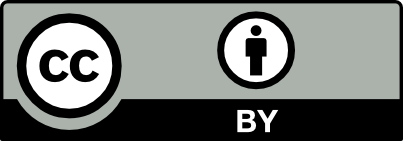Sistema de reconstrucción 3D para la estimación semi-automática de la longitud y el área de objetos mediante visión estéreo
DOI:
https://doi.org/10.18046/syt.v15i40.2372Palabras clave:
Visión estéreo, reconstrucción 3D, Procesamiento digital de imágenes.Resumen
En los entornos de manufactura de piezas industriales es necesaria la obtención de medidas básicas, como son la longitud y el área, en procesos de control de calidad. Este proceso se dificulta cuando no se puede tener contacto con las piezas y se debe recurrir a métodos de no-contacto. La visión estéreo es una técnica pasiva, robusta y confiable para llevar a cabo este tipo de tareas no invasivas. En este trabajo se describe la construcción de un sistema de visión estéreo para reconstrucción 3D y estimación de longitud y área de objetos, esta herramienta permite incorporar fácilmente técnicas del estado del arte en correspondencia de imágenes a su pipeline de ejecución principal. Las pruebas realizadas sobre algunos objetos muestran los beneficios de disponer de técnicas de correspondencia de imágenes cada vez más exactas.
Referencias
Cignoni, P., Callieri, M., Corsini, M., Dellepiane, M., Ganovelli, F., & Ranzuglia, G. (2008). MeshLab: an Open-Source Mesh Processing Tool. Sixth Eurographics Italian Chapter Conference, (pp. 129-136). doi:10.2312/LocalChapterEvents/ItalChap/ItalianChapConf2008/129-136
De Loera, J. A., Rambau, J., & Santos, F. (2010). Triangulations (Vol. 25). Berlin, Heidelberg: Springer Berlin Heidelberg. doi:10.1007/978-3-642-12971-1
Demant, C., Streicher-Abel, B., & Garnica, C. (2013). Industrial image processing. Berlin, Heidelberg: Springer Berlin Heidelberg. doi:10.1007/978-3-642-33905-9
Ferrin, C. (2017). UNIAJC: Proyecto visión estéreo. Retrieved from https://github.com/cdfbdex/UNIAJC_VISION-ESTEREO
Foix, S. & Aleny, G. (2011). Lock-in time-of-flight (ToF) cameras: A survey. IEEE Sensors Journal, 11(3). doi: 10.1109/JSEN.2010.2101060
Hagen, H., Disch, A., Ehret, J., Klein, R., Sascha, K., Zeckzer, D., & Michael, M. (n.d.). Visual inspection methods for quality control in automotive engineering. Visualization, 2004 IEEE. doi:10.1109/VISUAL.2004.111
Hamzah, R. A., Hamid, A. M. A., & Salim, S. I. M. (2010). The solution of stereo correspondence problem using block matching algorithm in stereo vision mobile robot. 2010 Second International Conference on Computer Research and Development, (pp. 733-737). doi:10.1109/ICCRD.2010.167
Hamzah, R. A. & Ibrahim, H. (2016). Literature survey on stereo vision disparity map algorithms. Journal of Sensors, 2016. Art. 8742920. doi:10.1155/2016/8742920
Hansard, M., Lee, S., Choi, O., & Horaud, R. (2013). Time of flight cameras: Principles, methods, and applications. London, UK: Springer. https://doi.org/10.1007/978-1-4471-4658-2
Kim, M. Y., Ayaz, S. M., Park, J., & Roh, Y. (2014). Adaptive 3D sensing system based on variable magnification using stereo vision and structured light. Optics and Lasers in Engineering, 55, 113-127. doi:10.1016/j.optlaseng.2013.10.021
Krig, S. (2014). Computer Vision Metrics. Computer Vision Metrics: Survey, Taxonomy, and Analysis. Berkeley, CA: Apress. https://doi.org/10.1007/978-1-4302-5930-5
Lee, S., Lee, J. H., Lim, J., & Suh, I. H. (2015). Robust stereo matching using adaptive random walk with restart algorithm. Image and Vision Computing, 37, 1-11. doi:10.1016/j.imavis.2015.01.003
Szeliski, R. (2011). Computer vision. Media (Vol. 42). London, UK: Springer. doi:10.1007/978-1-84882-935-0
Wöhler, C. (2013). 3D Computer vision. London, UK: Springer. doi:10.1007/978-1-4471-4150-1
Zhang, S., Wang, C., & Chan, S. C. (2013). A new high resolution depth map estimation system using stereo vision and kinect depth sensing. Journal of Signal Processing Systems, 79(1), 19-31. doi:10.1007/s11265-013-0821-8
Descargas
Publicado
Número
Sección
Licencia
Esta publicación está licenciada bajo los términos de la licencia CC BY 4.0 (https://creativecommons.org/licenses/by/4.0/deed.es)


